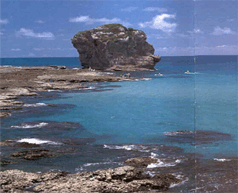A. The Gas Leak in Ta-Liao 
In December 2008, the unknown gas leak caused students and teachers in Chao-Liao elementary school serious illness such as headache and nausea. Without clear evidence, the victims had no way to pinpoint which particular nearby factory was responsible for the gas leak. Nor the government was able to help them to reach to any potential suspects. Angry residents thus initiated several street protests, some of which even turned violent.
About a month later, the EPA published the investigation report, confirming that seven factories might lead to the gas leak and be rendered responsible collectively. However this report did not help facilitate the dispute resolution. The county government in Kaohsiung invited representatives of Ta-Liao residents and relevant factories to meetings discussing about relevant liability and compensations. But these meetings failed to reach to any conclusions regarding who was primarily responsible for the incident. The Executive Yuan held subsequent inter and intro government meetings but until now, no consensus is ever reached.
B. Coral Depletion of Greek Cargo Amorgos 
The Amorgos, a 3,5000-ton Greek Cargo full-loaded with ore, lost its power and stranded in the waters off the coast of Oluanpi, Pingtung county, on January 14, 2001. Due to bad meteorological condition, its oil began leaking on January 18, 2001 and contaminated nearby coastline and coral reefs. The off-shore area of Long Kun was polluted by oil, and serious polluted area stretched over 20 hectares. As a result, fishing and tourist industries as well as nearby ecological system suffered from great loss. Given the terrain restriction, ocean phenomenon and ecological protection area, the clean-up task lasted more than three months; and the subsequent clean-up was not completed until October, 2001. According to the EPA, the total damage and clean-up fee was up to 93 million (Taiwan Dollars). The EPA negotiated with the Amorgos and its insurer (Assuranceforeningen, hereinafter Gard) regarding the compensation. However, the consensus about the compensation for ecological losses and economic losses could not be reached, and thus the EPA brought the suit to Pintung District Court in Taiwan and later to the Arendal District Court in Norway.
Based on Articles 33 and 34 of the Marine Pollution Control Act and Article 15 of the Civil Procedural Act, the EPA claimed that the Pingtung District Court in Taiwan had the jurisdiction as the pollution occurred in Pingtung. But the Pingtung District Court denied the jurisdiction and claimed that it was the Norwegian Court that enjoyed the jurisdiction. The judgment was made on three reasons. First, the applicable law between EPA and Gard was the Norwegian law. Second, the Norwegian court was much more experienced in dealing with cases regarding the International Convention on Civil Liability for Oil Pollution Damage. And finally, there was no agreement regarding judicial recognition between Taiwan and Norway.
EPA then brought the suit to the District Court of Arendal, Norway, and claimed 3.5 billion (Taiwan Dollars) including the damage to coral reef, to fining industry and other costs. In January 2005, the District Court of Arendal ruled in favor of the EPA. However, the Court rejected the claim for the recovery cost of coral reef, fining industry, as well as the loss of tax and tourist income due to the lack of evidence and only awarded a tiny small sum of monetary compensation, insufficient even to cover the attorney fee. The EPA then negotiated with both Gard and the ship owner. In March 2006, the ship owner agreed to pay a total of 34 million (Taiwan Dollars) as the final settlement.
